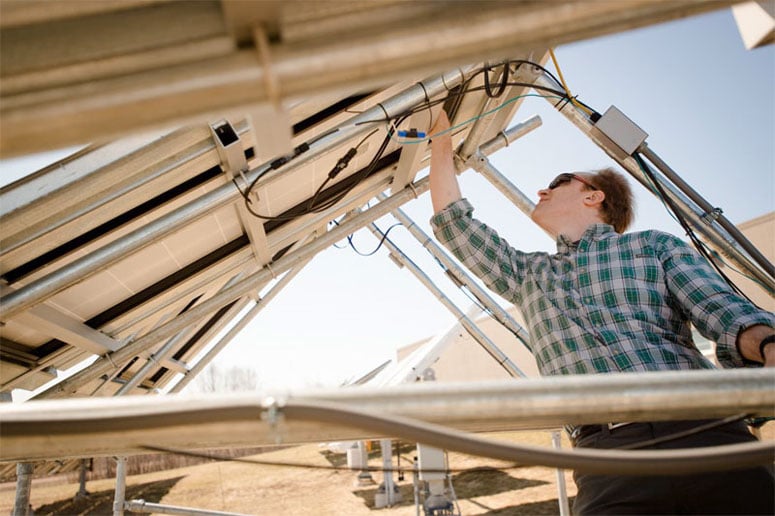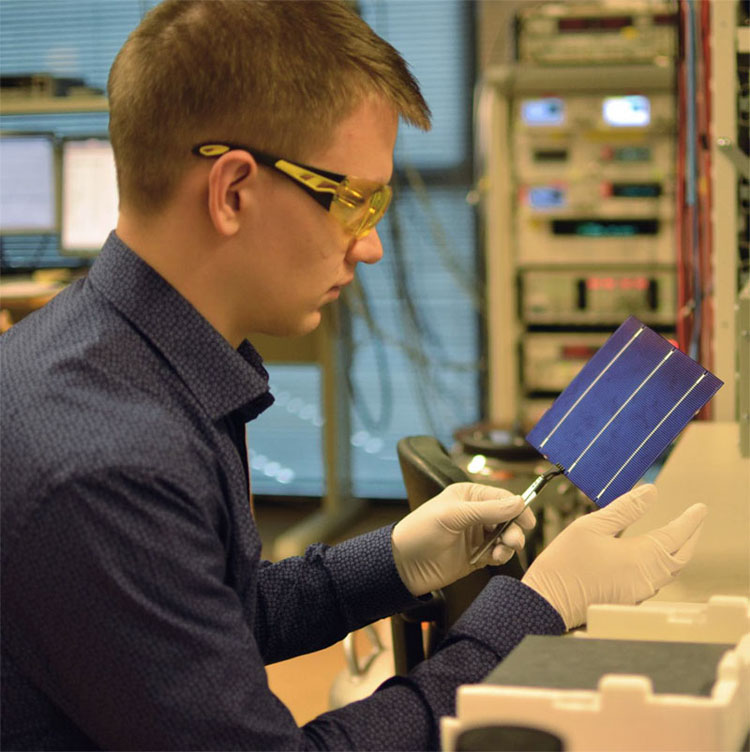
Dry-Etched Black Silicon Could Lower Solar Power Costs, Speed Industrial Production
HOUGHTON, Mich., Sept. 10, 2018 — One approach to improving solar cell efficiency is to shift to nanostructured silicon (black-Si, or b-Si), which has been shown to decrease reflective losses in multicrystalline silicon (mc-Si) wafers and prevent cell power conversion efficiency degradation. Researchers at Michigan Technological University analyzed the economic potential for industrial application of dry-etched b-Si. They found that the increase in the overall cell processing costs resulting from the addition of steps for the etching of the b-Si surface would be overcome by the multiple benefits generated by the nanostructuring process.

Joshua Pearce, professor of material sciences and electrical engineering at Michigan Technological University, has found a potential way to lower the cost of solar power by 10 percent, which could drive more investment in the industry. Courtesy of Sarah Bird, Michigan Tech.
Researchers already knew that nanotexturing silicon with dry etching makes b-Si more efficient at capturing light than standard etching treatments. The dry-etching process takes a normally flat silicon surface and “etches it into a forest of nanoscale needles. Those needles grab the light and don’t let it get away,” said professor Joshua Pearce.
Normally such a high surface area with many surface defects would hinder electrical performance, but researchers at Aalto University found that when the silicon is also treated with an appropriate atomic layer deposition (ALD) coating, the effects of surface defects are mitigated.

Switching the silicon in solar panels to black-Si cells using dry etching and atomic layer deposition (ALD) could lower the cost of solar power by more than 10 percent. Courtesy of Aino Laine, Aalto University.
The researchers found that, while the cost of producing b-SI passivated emitter rear cells (PERCs) was approximately 15 to 25 percent higher than production costs for conventional cells, the efficiency gains and the ability to go from monocrystalline silicon (mono-Si) to the less expensive mc-Si outweighed those costs. Overall, they found that the dry-etching/ALD approach reduced the cost per unit of solar power by 10.8 percent.
“Improving cost per unit power at the cell level can have massive effects downstream,” said Pearce. “This study points to where the future is going to go in PV manufacturing and what countries might want to do to give themselves a competitive advantage.”
Pearce said that while the production process can be optimized further, the next step would be for policy makers to use the data from the study at a policy level to invest in the equipment that will be needed to manufacture dry-etched PV cells.
“I don’t know which technology will end up being the one to dominate the solar field,” he said. "However, the study shows the clear economic impetus to move in the direction of dry-etched black silicon PERC."
The research was published in Energies (doi: 10.3390/en11092337).
Published: September 2018